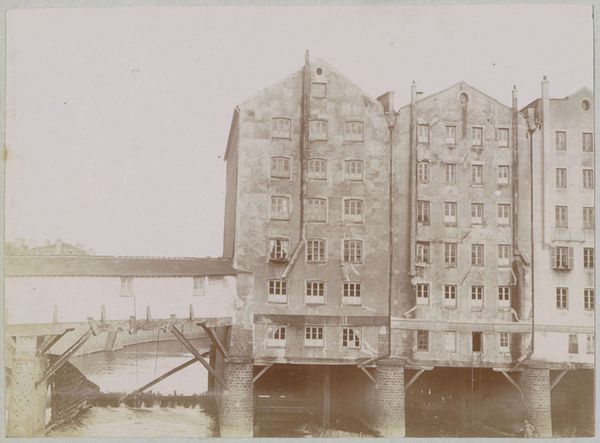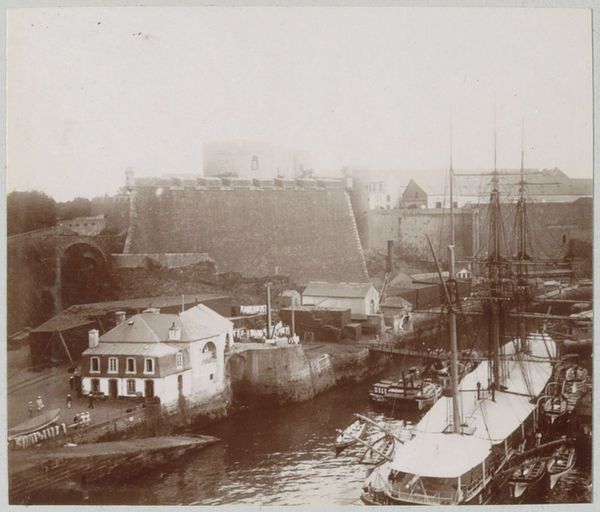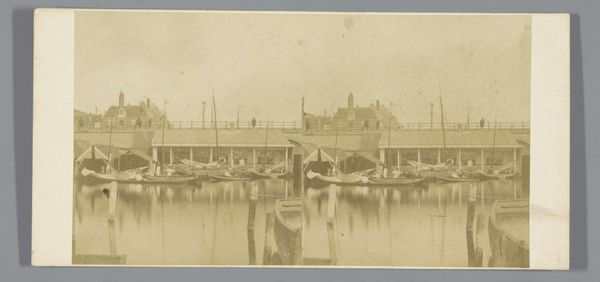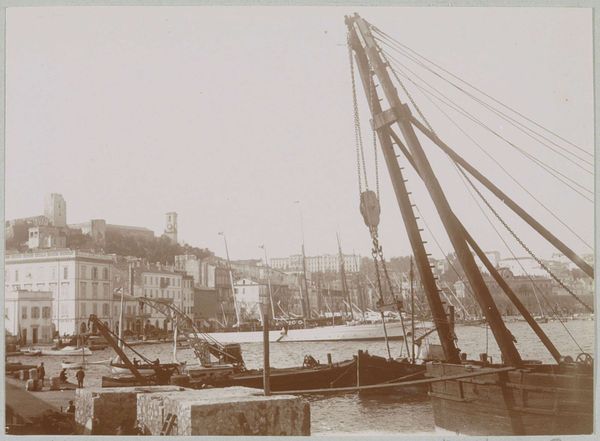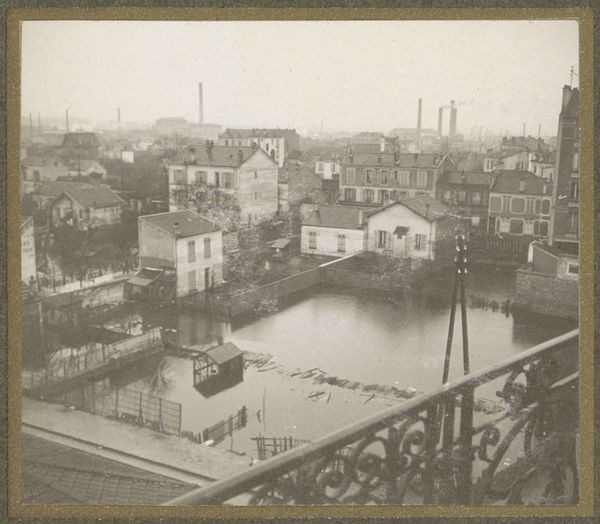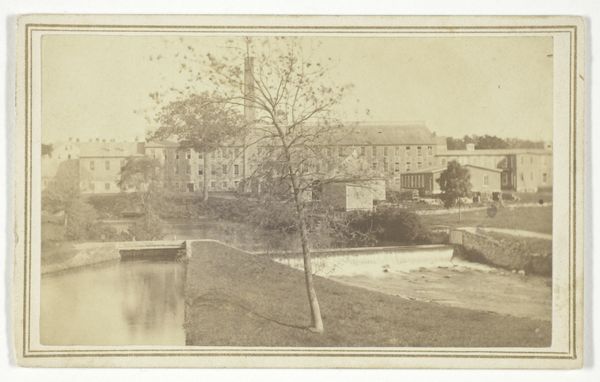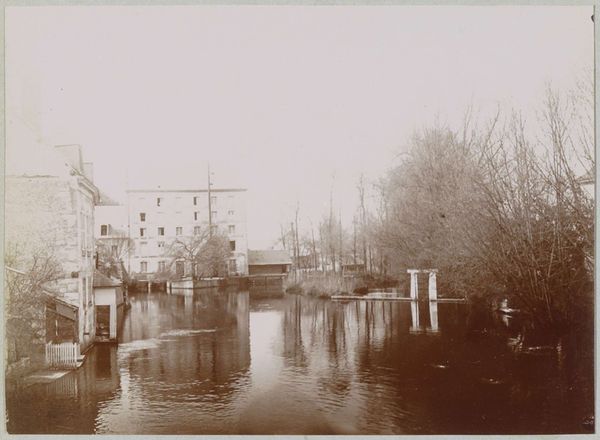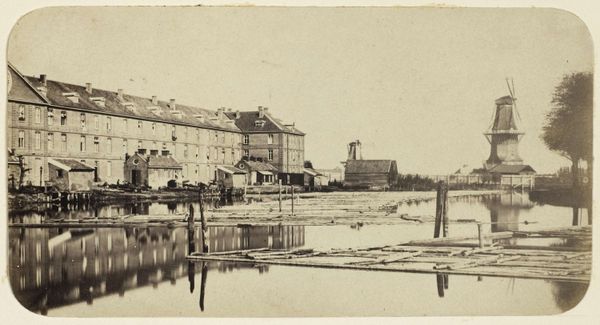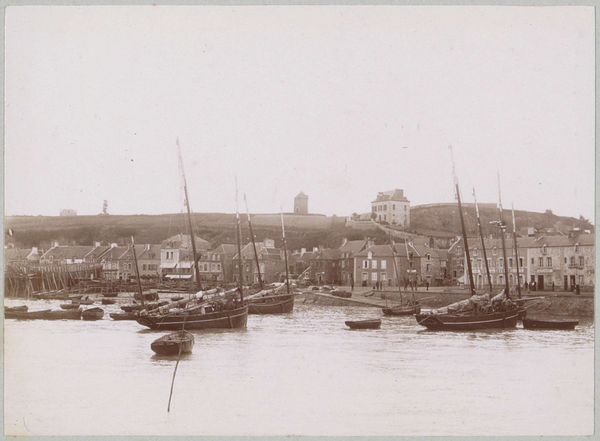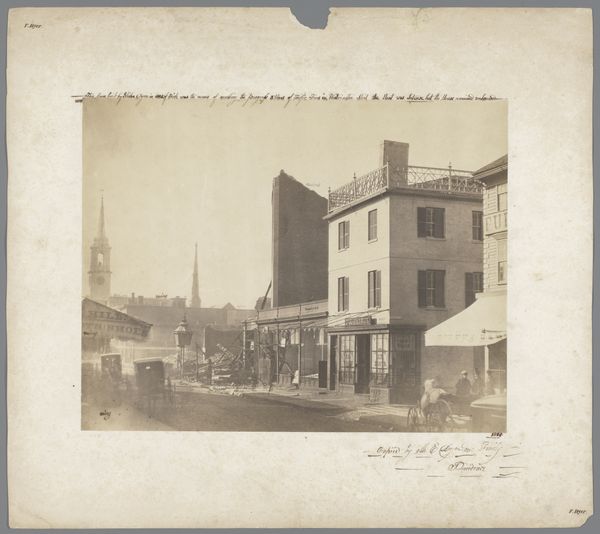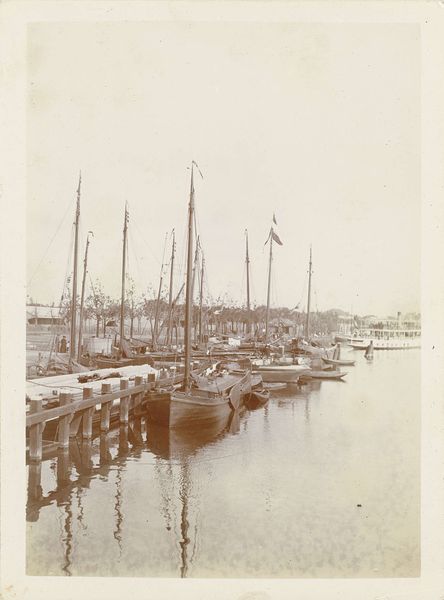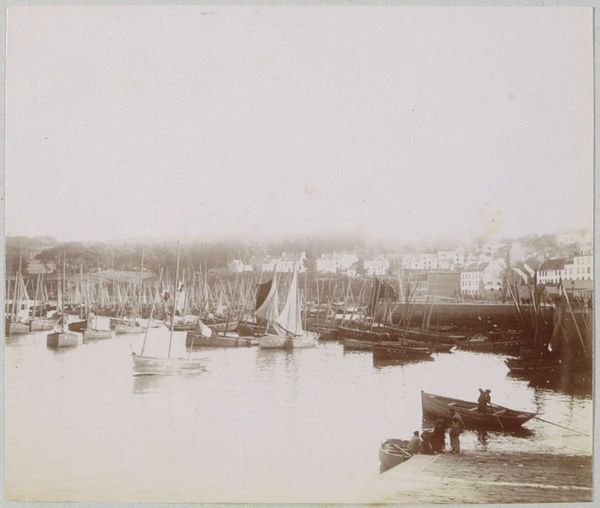
photography
#
pictorialism
#
landscape
#
photography
#
cityscape
#
watercolor
#
realism
Dimensions: height 79 mm, width 109 mm
Copyright: Rijks Museum: Open Domain
Editor: This is "Gezicht op watermolens in Meaux," a photograph taken in 1899. The light gives everything a muted, sepia-toned wash. It creates such a unique atmosphere and sense of distance. What is your take on this image? Curator: The image presents a study in architectural forms. Note the repetition of the rectangular volumes of the buildings, offset by the more organic shapes of the water and the supporting structures beneath the mills. Consider how the light interacts with the surfaces; see the textural variation rendered across the facades through subtle shifts in tone. The composition isn’t merely representational. It’s a constructed arrangement that exploits the tonal scale of the photographic medium. What purpose could such muted palette serve, do you think? Editor: Perhaps to focus on the structure and less on any specific historical reading. I noticed that the verticals and horizontals feel so ordered despite the reflection of the water complicating those rigid lines. Curator: Precisely. And observe the deliberate placement of the structures within the frame – not centered, but arranged to create a dialogue between the solidity of the built environment and the fluidity of the natural one. There’s a visual rhythm here that transcends mere depiction. Editor: I see what you mean. It's less about capturing the scene perfectly and more about how those forms communicate with each other visually. Curator: Absolutely. The image uses form and composition as its primary language. Considering this emphasis, it aligns itself, perhaps unexpectedly, with the aims of much non-objective painting from later in the 20th century. Editor: I wouldn't have thought of that connection, but I totally get it! This reframes how I see Pictorialism as a style. Thank you.
Comments
No comments
Be the first to comment and join the conversation on the ultimate creative platform.
